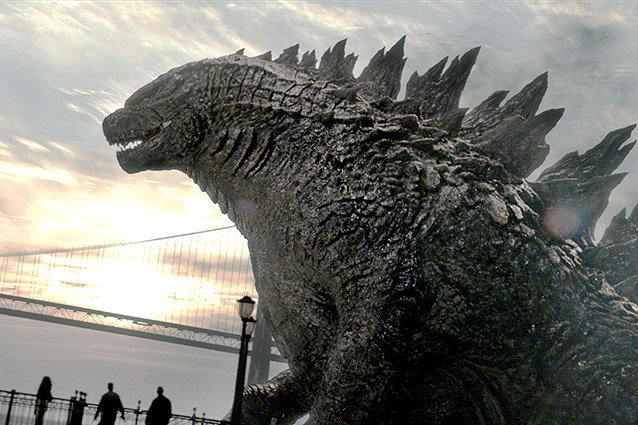
Godzilla is such a gigantic part of popular culture, but most people don’t even know how the Japanese monster grew into a worldwide phenomenon. This is a guide to everything a casual fan should know (hardcore fans, enjoy the stroll down memory lane).
The Atomic Origin
The very first Godzilla film came out in 1954. His name is actually Gojira, which in Japanese is a combination of gorira (gorilla) and kujira (whale) — basically what Godzilla was conceptualized to be: a monstrous gorilla-like creature, but with aquatic origins. The beast came about as a metaphor for nuclear weapons. The atomic bombings of Hiroshima and Nagasaki were still fresh in the minds of the Japanese. Godzilla was a serious, dark film that was truly a cautionary tale of what effect nuclear weapons would have on the world. Here is the monster destroying a city for the first time:
That destruction was serious stuff. A sequel called Godzilla Raids Again was released the next year. It was also dark and serious, but didn’t convey the same message as the original. Godzilla fought against another monster and moviegoers enjoyed it, so the sequels started churning out.
More and More Monsters
Some movies were good, others horrible. Dozens of monsters were introduced throughout the years. Toho, the film company responsible for the Godzilla flicks, gave a few monsters their own movies, most notably Rodan (1956) and Mothra (1961). Even King Kong got in on the action — Toho really had to fudge the size in King Kong vs. Godzilla since the lizard in question is the size of a building while Kong is just a really big ape.
Toho created so many beasts it released a film called Destroy All Monsters (1968), a sort of all-star movie featuring Godzilla and 11 other creatures. That’s a lot of special effects and men in rubber suits.
Unfortunately, Toho was too focused on making Godzilla movies. Many of them were ridiculous and maybe shouldn’t have been created in the first place. Gone was the legend of Godzilla and the cautionary tales of nuclear weaponry. Instead, we got Godzilla defying the laws of gravity:
Godzilla’s Legacy
Toho continued to make movies in the 2000s. The company, along with every Godzilla fan, was far from pleased with the American adaptation. The 1998 Godzilla was considered a joke. Renamed Zilla, the ’98 version of the monster was included in the 2004 film Godzilla: Final Wars. The real Godzilla fights and destroys Zilla in a matter of seconds.
Now, Godzilla is as recognizable as any movie star. There have been almost 30 films to Big G’s credit. Put “zilla” at the end of anything and you know it must be a force to be reckoned with (Carzilla — must be a lot of cars; Foodzilla — expect an abundance of grub). Blue Öyster Cult made a song in 1977 called “Godzilla.” Former New York Yankee and Japanese baseball superstar Hideki Matsui, a great player and World Series ’09 MVP, was given the nickname Godzilla. The Godzilla franchise is 60 years old and could be livelier than ever if the newest American adaptation is a hit with audiences.


